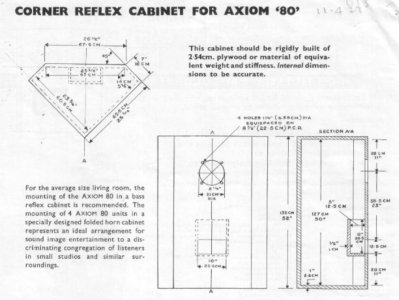ANOTHER WEDNESDAY
I wanted to start a new thread titled 'A Wednesday', but was afraid that UTV would sue me for copyright infringement

. Moreover, the images and other details of the setup are all here in this thread, saving me the effort to describe the components
Yes, it was on Wednesday that I got an opportunity to listen to Prem's Axiom 80s playing the EMT 930 through the Thoress F2a amp. The first impression upon entering Prem's place is the sheer beauty of the setup. The components , despite their vintage, look classy, elegant, rich and (sic) 'just like a wow'. Prem has posted pictures earlier in this thread - don't forget to take a look before reading further.
Prem had already arrived at three or four optional speaker positions, all within a few mm of each other and we began listening. The tracks that we used for comparison between the different positions were:
1. Geela Geela Pani from 'Satya'
2. Zindagi Kya Hai from Gulzar-Jagjit's 'Koi Baat Chale'
3. Making Music, the first track from Zakir Hussain's 'Making Music'
In every selected position, the music just flowed. I would summarise what I heard as the 3 Ns - Nuanced, Natural and Nimble. This was different from any other system that I have heard - it wasn't like a live performance on stage, it wasn't in-your-face and it wasn't laid back. The closest I can get to describing the sound is that it was as if one is a music conductor and the artists are auditioning in the room. The different speaker positions were like different 'takes'. We would hear Take 1 and then Prem would move the speaker by another 2 mm to give us Take 2, and so on. I was surprised at the big difference in sound that resulted from minuscule speaker movements. Perhaps the Axiom 80s are relatively more sensitive to placement, or maybe in Prem's company, one's ears get more sensitised to subtle changes! One of the positions that Prem had already identified clearly sounded superior and we then stayed with this position for the rest of the afternoon.
The sound of the thunderstorm in Geela Geela Pani made me look out of the window to check if it was raining. The rhythm of the rain fall in this same song perfectly synchronised with Lata's natural voice. In Zindagi... Gulzar's opening intro and Jagjit's rendering made me reflect on the events in Jagjit's life and then reflect on my own - 'sabko apne hi kisi baat par rona aaya'

. In Making Music, the dynamics in Chaurasia's flute, the change in mood when Zakir comes in with his tabla intro and the piercing wail of Garbarek's sax takes one into another world. It is rare to hear a setup that conveys detail, flow and emotion so well. The Axioms indeed bring out the characteristics and nuances of every instrument being performed, but without losing cohesiveness.
We then heard Brubeck/Desmond play Three To get Ready and Take Five. On the former song, the timing of the piano and drums playing in sync after Desmond's sax solo needs to be perfect, and indeed it was. On Take Five, every strike of the drum stick on the snare was distinguishable. We both felt that bass needs to open up a bit more and this may take a couple more weeks of burn-in.
As we still had a few minutes left, we decided to listen to some older analogue tracks. Prem threw in the Intaqam LP with Rafi singing 'Jo Unki Tamanna'. Man, this was simply the next level. Rafi's voice, the orchestral backing and the piano came through so very naturally - this is what the craze for analogue pressings is all about. Superb indeed!
A big thank you to
@prem for having me over and for being, as always, a wonderful host.
Cheers!




